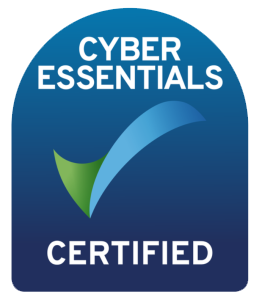How to avoid phishing scams
We’re committed to protecting the privacy and security of our customers and website visitors. Staying safe online can be tricky, which is why we’ve created this handy guide to help you.
What is phishing/smishing (SMS phishing)?
Phishing is where cybercriminals ‘fish’ for personal data by sending you emails (or social media messages, SMS texts etc) that look like they’re from a legitimate sender or business. These cybercriminals will attempt to steal your personal data by:
- Sending you emails that look like they’re from a legitimate sender
- Asking you to download files or software
- Asking you for personal details such as usernames and passwords
Their aim is often to get you to reveal private information like your usernames, passwords, and other secure information, such as your bank or financial details.
Cybercriminals often send emails or SMS messages urging you to act immediately by giving up your private information – and it can be convincing, as they’ll often use similar or the same language and images as the companies they’re impersonating.
When you enter your details, fraudsters can use this to access more of your information.
Alternatively, phishing emails may encourage you to download software or install a file. This file can infect your computer with a virus or program and put your files and data at risk.
What can you do against phishing/smishing?
To stop a phishing / smishing scam, make sure you check the email address to ensure messages are valid and have come from who they say.
A phishing email may use similar details to the recognised address, but you may notice spelling errors or slightly different formatting.
Before you click on any links, hover over the button or URL to check it goes where it’s supposed to. If it brings up an unrecognised address, it could be a scam.
How can I identify a phishing/smishing email or SMS?
Common features of phishing emails include:
- Poor language – look out for poorly written sentences with spelling and grammatical errors
- Lack of a personal greeting – you might be addressed as ‘Dear Customer’, ‘Dear Sir/Madam’, or ‘Dear [your email address]’ instead of using your name as you gave it to us on your account
- A vague email address – the email address will often be different from the service you are using
- Link or button – links or buttons in emails that urge you to click on them
Will Tierney’s ask you for your bank details?
To protect both you and us against rising levels of email fraud, we have developed the following policy regarding bank details:
From now on, if we ask you to change the bank account into which you make payments to Tierney’s Office Automation Ltd, we will only do so as follows:
- The request will be posted to you on Tierney’s Office Automation Ltd. headed paper
- The letter will ask you to confirm the new bank account number by ringing our accounts department on 065-6828281 and verifying the new bank details.
- Only then should you change the payee bank details on your systems.
Should you receive any emails purporting to come from our company containing new or updated banking details, please make no payment and contact us by phone immediately.
How to report a phishing attempt
If you’ve received a suspicious phone call, text message, interaction via social media or email, you should report immediately to your local Garda Station
How to get support
If you are in any doubt, please feel free to contact us in the usual ways.
We’re committed to protecting our customers’ privacy and security – but we can’t defend you from scams that target you directly.
Following our basic guidance will help you stay one step ahead of the fraudsters.
Spot the signs and stay safe.







